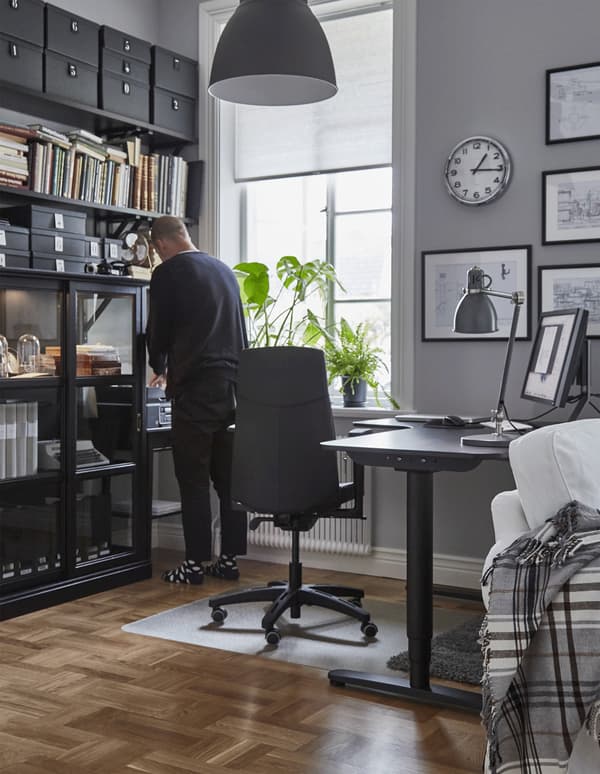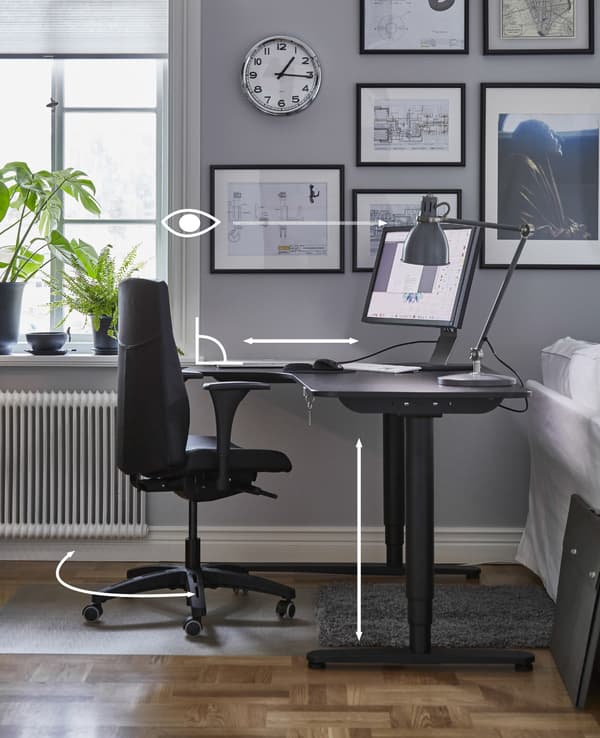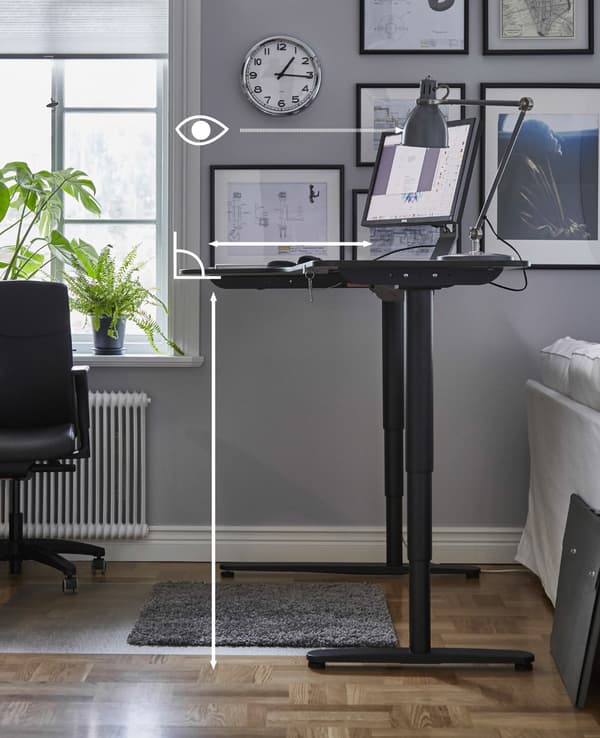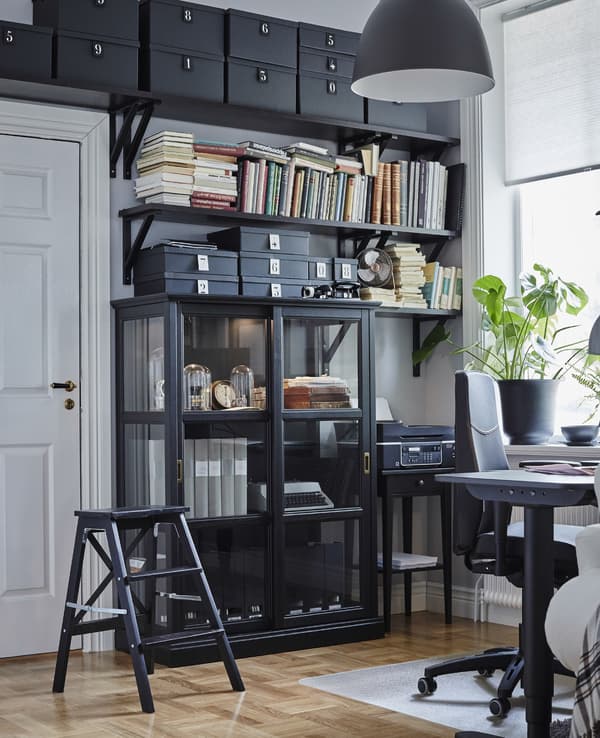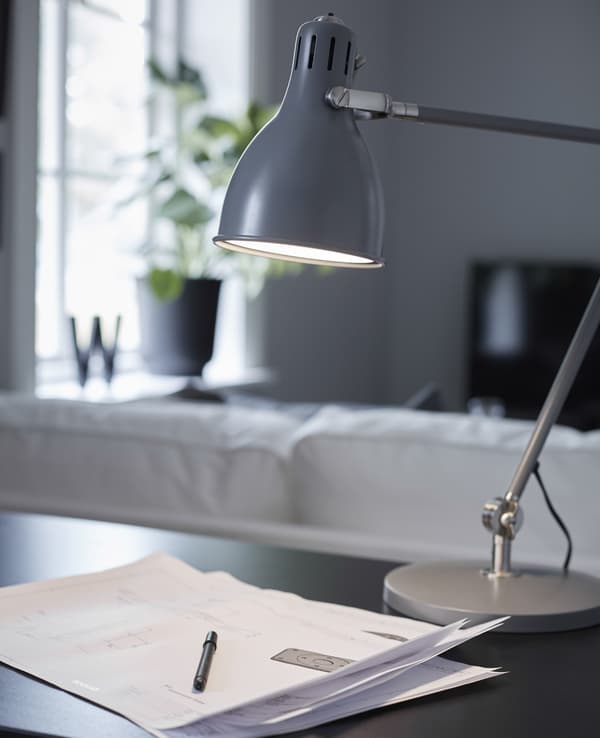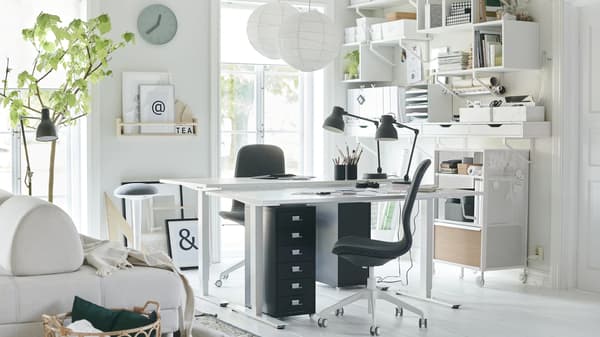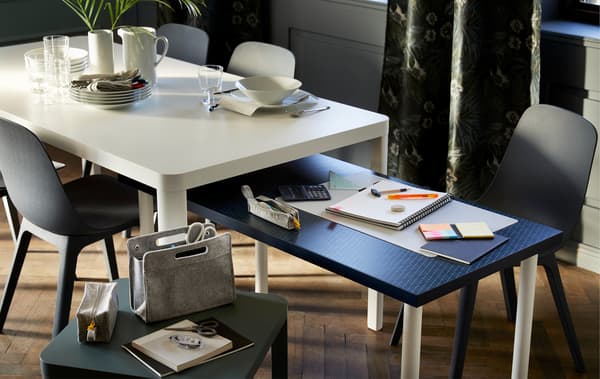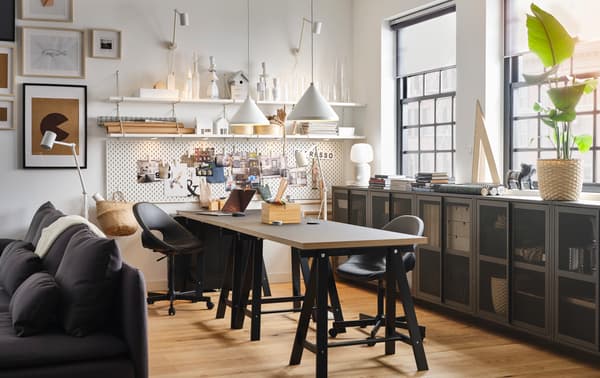How to design an ergonomic work space
Does your back hurt? And your neck? It could be down to the position you’re working in. Sadly, we can’t help you reduce your working hours, but what we can do is give you some tips to create a better workspace at home. What do you think?
We’ve put together six points on how to achieve an ergonomic working area that is beneficial to your physical and mental well-being and that also helps you reduce fatigue and stress. Best of all, you can apply these tips whether you’re working remotely or spending endless hours in the office, so there’s no excuse. Let’s get started!
1. Schedule breaks
Spending endless hours sitting at a desk or table in your office causes your body to ache and you to feel tired. Eye strain, back pain and neck pain, as well as carpal tunnel syndrome due to excessive use of the computer mouse, are just some of the ailments commonly suffered by people who work in front of a screen.
So the best advice we can give you, and that all the experts recommend, is that in addition to an ergonomic workspace with all the right furniture, it is essential to get up from time to time to stretch your legs, clear your mind and rest your eyes.
This simple habit has great benefits for your mental and physical health. If you’re worried you’ll forget, you can simply set an alarm for regular periods and automatically take a few minutes to switch off. You can take the opportunity to go to the bathroom, get a drink of water (as staying hydrated is also very important) or take a walk around the house to the tune of your favourite song. The important thing is that you move.
2. The best desk chair
Earlier we mentioned that the furniture we use plays a huge part in achieving an ergonomic workspace at home or in the office. Let’s start, for example, with the desk chair.
Working at a desk requires a chair that provides good back support, is adjustable and swivels so we can move freely. Ergonomic chairs are those that adapt to our entire body and allow us to work in a safe and comfortable way. But is a good chair enough? The answer is no.
When sitting, we have to take other factors into account to achieve good posture. Your computer monitor should be positioned at eye level with the arms and elbows resting at a 90° angle when your hands are on the keyboard. Chairs with armrests, in this case, will help you maintain this position.
3. Adjustable height desks
If you want a really ergonomic work space, our next tip is to go for an adjustable table. Let’s explain why.
Height adjustable desks are ideal because they allow us to change position regularly. They offer us the opportunity to switch between seated and standing work, thus activating blood supply and reducing the harmful effects of sitting for too long.
But remember, when working stood up, we must follow the same rules when it comes to ergonomics as when working in a seated position. The top of the monitor should be at eye level, and the arms should be supported at keyboard level. Oh, and also try not to cross your legs to avoid affecting your circulation.
As a tip, if the floor is hard, it’s a good idea to put down a rug so that your knees don’t feel the effects (as well as wearing comfortable shoes).
4. An extra technique to reduce stress
If you’ve read any of our other articles, you’ll be familiar with this rule. It’s that order directly impacts our emotional well-being and work is no exception.
The layout of the furniture helps you enjoy a practical and comfortable workspace, so we recommend using different storage systems, such as drawer units or other desk organisers, to achieve perfect harmony in your working environment.
It’s best to keep the things you use most close to your desk, while those only used from time to time can be put away or stored higher up so they don’t get in your way. Small office supplies can be stored in a desk organiser or in a wheeled storage trolley, which can also be moved closer to your desk whenever you need it. This, in fact, also speeds up the process of grabbing or gathering up work material if you don’t always work in the same place at home.
The following video has some quick tips on how to organise your desk in a simple way:

5. A suitable light for working
When we talk about lighting for working from home, we should take into account three different types of light: natural, general and ambient.
In general, well-lit spaces boost concentration and prevent eye irritation. In fact, natural light is the most pleasant and efficient light source for our well-being, so when designing your workspace it is best to position the furniture in a way that makes the best use of natural light. Next, we play with ambient light to add warmth to the space and general light so the lighting is always just right, even when the sun goes down.
Ideally, your workspace should be next to a window, avoiding reflections on the screen, of course. If this isn’t possible, use light bulbs with a light spectrum similar to sunlight (minimum 5,000 K). Don’t forget to use work lamps or adjustable lamps, as they provide direct lighting in the particular area you’re working in.
6. Look after your environment
We’ve already talked about the many benefits that plants have. That’s why it’s also beneficial to have plants in your workspace, whether that’s at home or in the office.
And that’s because fresh air boosts concentration! Plants release oxygen and moisture, so they improve air quality.
If you’re not near any windows, you can use plants to purify and oxygenate the air. Also, did you know that plants can boost your mood? They have it all!
So that’s it. Follow these tips and turn your workspace into an area filled with comfort and good vibes.
Need more inspiration to create your workspace at home? We leave you with an extra video to create an area for working remotely in any area of your home and a selection of ideas that may interest you:

We love it when customers use our products in a creative way. Why not try to do something new with them yourself? But do remember, any modifications or changes that you make to IKEA products will prevent them from being resold or used for their original purpose, thus invalidating IKEA product warranties and your right to return them.

